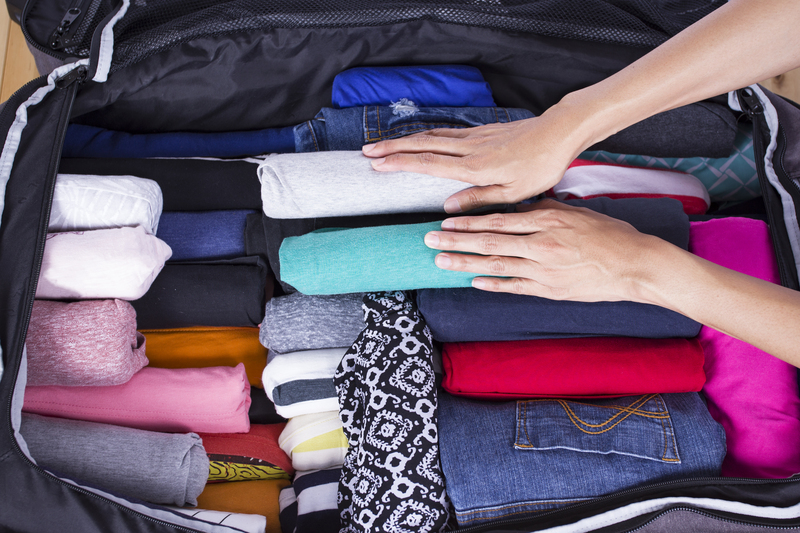From Bedroom to Bedroom: Navigating Bed and Mattress Moves
Posted on 03/06/2025
From Bedroom to Bedroom: Navigating Bed and Mattress Moves
Moving a bed or mattress sounds simple in theory, but in practice, it can be more challenging than expected. Whether you're rearranging within your home, switching bedrooms, or preparing for a major move, understanding how to efficiently and safely manage bed and mattress moves is essential. This comprehensive guide will walk you through every step, from preparation to reassembly, for both bed relocation and mattress moves.
Why Proper Bed and Mattress Moving Matters
When faced with moving a mattress and bed between bedrooms, many people underestimate the process. Taking shortcuts can lead to:
- Damage to the mattress, bed frame, or surrounding walls
- A reduced lifespan of your mattress due to improper handling
- Personal injury from lifting heavy or awkward items
- Strain and stress, both mental and physical
Understanding the right way to handle bedroom moves ensures both safety and the longevity of your bedroom furniture.

Preparation is Key: Getting Ready for a Mattress Move
1. Gather Needed Supplies
Before you get started, assemble the following items:
- Mattress bags or protective covers
- Moving blankets and shrink wrap
- Ratchet straps or ropes
- Gloves with grip
- Basic tool kit (screwdrivers, Allen wrenches, pliers)
- Furniture sliders and a dolly (for heavy or bulky pieces)
- Clear, open floor space
Tip: If you're moving a mattress between bedrooms on different floors, double-check the width of stairwells and doorways!
2. Clear the Path
Plan the route your bed and mattress move will take. Clear any obstacles, protect floors with blankets, and measure all the spaces to ensure a smooth transition.
3. Enlist Help
Don't try to move heavy or awkward bedroom furniture alone. Having at least one helper makes the process safer and less stressful.
Step-By-Step Guide: Moving Beds and Mattresses Like a Pro
Step 1: Disassemble the Bed Frame
Most beds cannot be moved in one piece. Here's how to take them apart:
- Remove all bedding, pillows, and the mattress from the frame.
- Take photos of how the bed is put together to make reassembly easier.
- Remove any slats, support bars, or headboards. Keep all screws and hardware in a resealable bag, labeling it clearly.
- For larger beds (like a king or queen), split into smaller sections if possible.
Tip: Use masking tape to label parts--especially if moving multiple beds at once!
Step 2: Protect Your Mattress
Mattresses can pick up dirt, dust, and even tears during a move. Use a mattress bag or heavy-duty plastic cover to protect it from moisture and damage. Secure it with moving tape for a snug fit.
Avoid bending or folding memory foam and spring mattresses, as this can cause damage to the internal structure.
Step 3: Transport the Mattress
Mattresses are awkward but flexible. To move yours:
- Slide the covered mattress onto its edge and secure with straps if necessary
- Use a dolly for long trips, or carry with a partner by gripping each end
- Be careful with narrow hallways and staircases--move slowly and pivot as needed
- Never drag a mattress, as this can tear the fabric and inner lining
Step 4: Move the Bed Frame Components
Wrap bed components in moving blankets to prevent chips and scratches. Carry pieces vertically for easier navigation through tight spaces.
- Be especially careful with headboards and footboards--these are often the most ornate and easiest to damage
- Keep screws, bolts, and brackets taped to the matching bed part or clearly marked
Step 5: Reassemble in the New Bedroom
Once both bed frame and mattress have arrived at their new home, reconstruct the bed:
- Laying out all parts and hardware in advance
- Refer to your photos and instructions for quick, easy assembly
- Double-check connections, ensuring screws and bolts are tight
- Add slats or box spring, then gently place the mattress on top
Your bed is ready for a good night's sleep!
Additional Tips for Efficient Bed and Mattress Moves
Choose the Right Moving Method
Depending on your needs, you might opt for:
- DIY move (perfect for same-home moves or short distances)
- Professional movers for large, heavy, or valuable beds and mattresses
- Specialized mattress moving services--ideal for fragile items and elevators
Know Your Mattress Type
Not all mattresses are created equal, and each type requires special care:
- Innerspring mattresses: Should be kept flat to avoid spring distortion
- Memory foam mattresses: Never fold or bend, as this can cause permanent damage
- Hybrid mattresses: Treat as fragile; avoid rolling or folding
- Latex mattresses: Flexible but heavy--requires extra support when moving
Stairs and Elevators: Navigating Tight Spaces
Mattresses may seem flexible enough to fit, but tight turns on stairs or in small elevators present a unique challenge:
- Measure tight spots before you move to avoid surprises
- Position the mattress upright (on its side) to maneuver around corners
- If your bed frame is too large for an elevator, arrange to move it in pieces
Common Challenges and How to Overcome Them
- Mattress too large for hallways: Try different angles, remove doors, or opt for "bending" hollow-core innerspring mattresses slightly (with care).
- Lost hardware: Use extra zip-lock bags, or source replacement hardware from local stores or bed suppliers.
- Move creates scratches: Protective blankets and careful teamwork prevent most scuffs. If damage occurs, use touch-up kits or repair markers.
- Physical strain: Bend your knees, lift with your legs, and always use a partner whenever possible.
The Do's and Don'ts of Bed and Mattress Moves
- Do plan ahead and measure spaces
- Do protect all surfaces with covers and blankets
- Do re-tighten fasteners after moving and before use
- Don't rush--the more methodical your process, the less likely you'll have accidents
- Don't try to move heavy furniture or mattresses alone
- Don't forget to label hardware and pieces, especially if you're moving multiple beds
Long-Term Care: Extending the Life of Your Mattress and Bed Post-Move
Once you've navigated bedroom-to-bedroom moves, give your furniture a once-over to check for issues:
- Tighten bolts and screws after 24-48 hours (the frame may settle into a slightly different position)
- Use mattress protectors and bed pads to prevent future wear and tear
- Rotate your mattress every 3-6 months to maintain comfort and support
- Immediately address any creaking or wobbling from the frame
When to Replace, Not Relocate
Sometimes, the moving process highlights that your current bed or mattress is nearing the end of its life. If you notice:
- Visible sagging or lumpy areas in your mattress
- Broken or splintering frame components
- Persistent creaking or instability
- Lack of support or increased discomfort
Consider using the move as an opportunity to upgrade your sleep setup. Newer mattresses and frames are often easier to move, offer better support, and ensure you're getting the quality rest you deserve.
Professional Bed and Mattress Moving Solutions
If you're dealing with particularly heavy, expensive, or valuable beds--think antique headboards, adjustable bases, or specialty mattresses--it may be worth hiring a professional service. Look for movers with experience in:
- Disassembly and reassembly of complex frames
- Safe mattress packing and transport
- Insurance coverage for high-value items
- Time-saving, stress-free moves
Investing in specialized bed and mattress moves can save money in the long run by preventing accidental damage.

Frequently Asked Questions About Bed and Mattress Moves
- Can I move a king-size mattress by myself?
It is not advisable. King-size mattresses are large, cumbersome, and heavy. Always enlist at least one helper, or use professional movers. - How can I move a bed and mattress upstairs?
Disassemble the frame, bag the mattress, and use a partner for control. Take turns slowly with plenty of breaks and secure your grip. - What's the best way to protect my mattress during a move?
Use a mattress bag made of thick plastic, and wrap in blankets or bubble wrap for added protection. - Is it OK to fold a foam mattress during a move?
Some memory foam mattresses can be flexed, but never fold tightly or store bent for long periods. Always check manufacturer guidelines. - How do I move a bed frame without scratching floors?
Use furniture sliders or moving blankets under each piece, and lift instead of dragging whenever possible.
Conclusion: Make Your Next Bed and Mattress Move Hassle-Free
From bedroom to bedroom, navigating bed and mattress moves doesn't have to be stressful. By preparing properly, protecting your belongings, and moving thoughtfully, you can ensure both safety and the longevity of your favorite bedroom furniture. Whether you opt for a DIY approach to bed and mattress relocation or hire professionals for the heavy lifting, follow these expert tips to enjoy your new bedroom setup--and a great night's sleep--sooner.
For more tips and resources on bedroom furniture moving, explore our website's moving guides or consult with local moving professionals for specialized advice.

 request quote
request quote


